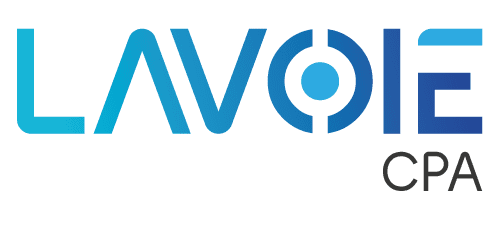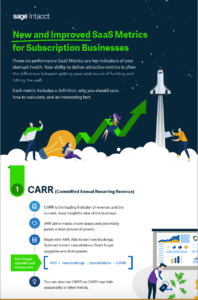
by Sharai Lavoie | Sep 24, 2025 | Budgeting, Forecasting
Delayed or disconnected financial reporting can mean missed opportunities and budget surprises. When your month-end numbers land weeks late, or worse, don’t tie back to the plan, you’re left making decisions in the dark. The key to proactive financial management lies in reports that seamlessly link actuals to your budgets and forecasts, so you can spot variances, adjust tactics, and drive growth in real time.
1. Define Clear Reporting Objectives
Before building any report, clarify what decisions it must inform. Ask yourself:
- Who needs visibility into the company’s financial results (e.g., department leads, directors, board)?
- What questions should the report answer (e.g., “Which sales people are hitting their revenue targets” or “Which expense categories are drifting over budget”)?
- How frequently will decision makers need to review their financial data – daily, weekly, monthly?
Setting objectives up front ensures every metric you include drives action.
2. Align Your Chart of Accounts to Key Drivers
A generic account structure forces lengthy reconciliations. Instead:
- Map accounts to programs and locations – Where applicable, assign revenue and expense accounts to each team, department, or location.
- Use consistent dimensions – Creating efficient dimensions such as department, location, customer, etc. will allow you to slice data by revenue or expense category. (Cross reference to our blog on data dimensions.)
- Standardize naming conventions – Keep account labels simple and uniform. Too often, we see companies creating too much complexity by using too many accounts in their chart of accounts or creating accounts that are specific to a vendor or customer. (Cross reference to the chart of accounts blog)
- Build your budget and forecasts using the same chart of accounts in your accounting system – This helps streamline the reporting by account so that your budget vs actual analysis is comparable. Additionally, by aligning your chart of accounts between your budgets and actuals, you can upload your budgets into your accounting system for efficient reporting each month.
When your chart of accounts mirrors the drivers in your budget and forecast, reports update automatically without manual workarounds.
3. Automate Data Integration and Reconciliation
Manual exports and Excel formulas introduce errors and delays. Aim for a single source of truth:
- Connect operational systems – Sync your sales, payables, and payroll systems into your accounting system, where possible. It’s best to leverage automated programming interfaces (APIs) rather than spreadsheet uploads.
- Schedule frequent data interfaces – Ensure new transactions feed into your general ledger as real-time as possible, so reports are always current.
- Leverage built-in reconciliation tools – Automate the matching of bank and credit card transactions to posted entries in your accounting system to streamline your work efforts.
Automation not only speeds up reporting, but it also reduces the risk of misstatements that derail decision-making.
4. Build Monthly Budget vs Actual Reports in the Accounting System
Leverage the reporting functionality in your accounting system to create budget vs actual reports. This will allow your team to redirect time from creating spreadsheet reports to variance analysis.
- Budget vs. Actual dashboards – Display actuals side by side with budget and forecast figures, including non-financial drivers (e.g., new and lost customers, employee headcount by department, units sold).
- Variance analysis – Highlight over- and under-performing line items, with callouts for any variance exceeding a set threshold (for example, 5%).
These dynamic elements transform spreadsheet reports into interactive tools that guide strategic conversations.
5. Empower Managers with Role-Based Views
Not every user needs every number. Tailor reports to drive accountability:
- Sales reports – Focus on revenue per person, team, or location.
- Operations managers – Show variances in department budgets versus actual in order to drive accountability for expenses.
- Executive summary – Deliver a high-level dashboard with key KPIs, total revenue, cost ratios, and cash-flow forecasts for senior management and board members.
By giving each stakeholder the right view, you shift from firefighting to collaborative problem-solving.
When your financial reports directly align actuals with budgets and forecasts, you gain the agility to course-correct throughout the year, optimize decisions, and keep every team member focused on growth. Ready to turn your finance function into a strategic advantage? Start the conversation.

by Sharai Lavoie | Feb 16, 2021 | Accounting, Blog, Budgeting, Business Intelligence, CFO, Community, Competitive Advantage, CPA, Entrepreneurs, Finance, Financial Services, Growth, Lavoie, Planning, Services, Small Business
Developing a strategic financial plan can seem daunting; however, it can be boiled down into two questions: what are you doing now and where do you want to be? This article walks you through the process of answering these two questions, providing a foundation for developing a financial strategy for your organization.
Question 1: What Are You Doing Now?
Every journey has a starting point and an ending point. Before you can implement a plan to achieve your financial goals, it is important to consider where you are now.
Current State of the Numbers
The current state of your organization’s numbers are a good starting point when determining your organization’s capability to meet its financial goals. Some important questions to ask include:
- Are you in a position of stability? Financial stability is vital to reaching “stretch” goals. If the organization is not currently financially stable, it is important to identify this fact and develop a strategy for achieving stability as a first step in the planning process.
- What is actually coming in/out the door? Knowing the size of the company’s cash reserves is not enough for financial planning. How much revenue is coming into the organization and how much is going out again as expenses?
- What is fueling the majority of your expenses? While increasing sales is one way of improving the organization’s financial footing, the ability to do so depends on the market and potential customers. Identifying and minimizing expenses increases profits as well but is less impacted by external factors.
Culture
Achieving financial goals requires the support of the entire organization. Take a moment to consider your organization’s culture and if the company has the maturity and ability to meet its goals.
- Do your decisions match your vision and mission? An organization’s goals and procedures are important, but actions are even more so. Are your decisions, both recent and historical, helping to move the organization towards its goals?
- Would your employees agree? Employees throughout the organization can have different perspectives, insights, and recommendations. Ask those “down in the weeds” how well the company is following its vision and mission and how they believe things could do better.
Question 2: Where Do You Want To Be?
The effectiveness of a strategic plan can only be effectively measured if there are usable metrics. Before starting to build a plan to improve the organization’s financial position, it is necessary to define success and failure.
Targets
The first step in defining “success” for a financial strategy is defining concrete targets. From there, the next question to ask is what do you need to achieve your targets?
- Human Capital. Does your organization have the human capital necessary to achieve its goals? This not only includes headcount but access to the specific skill sets required now and in the future.
- Acquisitions. Does your organization have the capabilities that it requires? Are there areas of your business where things could be done more effectively or efficiently?
- IT Investments. The IT landscape is evolving rapidly, and new solutions have the potential to dramatically improve operational efficiency and effectiveness. Are there any IT investments that the organization should make that would help in reaching its targets?
Expenses
A failure to properly monitor and manage expenses is one of the most common ways that businesses fail to achieve their financial goals. Gaining visibility into past, present, and future expenditures is an essential part of financial planning.
- How can you gain more visibility into your expenditures? Visibility into expenditures is essential to identifying opportunities for optimizations and cost cutting. How can you achieve a higher level of visibility into business operations?
- Do you have an idea of your cash flow on a daily, weekly, and monthly basis? What level of visibility do you currently have into your organization’s cash flows? Examining cash flows at the daily, weekly, and monthly level can help to identify potential inefficiencies and opportunities.
Beginning Your Strategic Financial Plan
Answering the questions that were asked in this article enables you to lay the groundwork for developing your organization’s financial strategy. To learn about the next steps in your financial planning process, download the CEO’s Guide to Strategic Financial Planning.
![Sage Intacct’s 6 Key Performance Metrics For Subscription Businesses [INFOGRAPHIC]](data:image/svg+xml;base64,PHN2ZyB3aWR0aD0iMSIgaGVpZ2h0PSIxIiB4bWxucz0iaHR0cDovL3d3dy53My5vcmcvMjAwMC9zdmciPjwvc3ZnPg==)
by Tara Fusco | Oct 29, 2020 | Accounting, Analytics, Blog, Budgeting, Business Intelligence, CFO, CPA, Entrepreneurs, Growth, Intacct, Planning, SaaS, SMBs, Software, Startups, Technology
How Healthy Is Your SaaS Business? These 6 Metrics Will Help You Figure That Out
As a Sage Intacct certified accounting and implementation firm, Lavoie CPA is excited to share the latest findings for SaaS businesses to become successful in 2021.
From startups to organizations ready to scale each one of these indicators is an invaluable piece of information to evaluate your company’s overall health — not to mention prep you for that looming board meeting in the near future.
In this infographic we will dive into why each of these metrics is the difference between getting your next round of funding, scaling year over year, or hitting the wall.
Get the infographic and learn why you should care, how to calculate, and an interesting fact about the following KPIs:
- CARR (Committed Annual Recurring Revenue)
- CAC (Customer Acquisition Cost)
- CLTV (Customer Lifetime Value)
- Churn
- Free Cash Flow
- CCS (Cash Conversion Score)





![Sage Intacct’s 6 Key Performance Metrics For Subscription Businesses [INFOGRAPHIC]](https://lavoiepllc.com/wp-content/uploads/2020/10/Sage_BlogHeader-1080x482.png)
